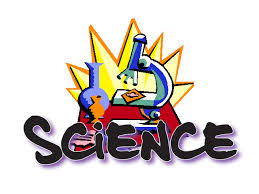Table of Contents
- Introduction
- Why Visualization Matters in Physics
- Types of Physical Visualization
- Vector Fields and Scalar Fields
- Phase Space and Trajectory Plots
- Contour and Density Plots
- Animations of Time Evolution
- 3D Rendering and Simulation Views
- Field Lines and Streamlines
- Visualizing Quantum Systems
- Visualization in Fluid Dynamics
- Computational Tools for Visualization
- Real-Time and Interactive Interfaces
- Best Practices in Scientific Visualization
- Conclusion
1. Introduction
Visualization transforms abstract mathematical descriptions of physical systems into concrete images that enhance understanding. It is a bridge between theory and perception, enabling researchers, educators, and students to grasp complex phenomena through visual intuition.
2. Why Visualization Matters in Physics
- Reveals structure and symmetries
- Aids debugging in simulations
- Helps communicate scientific ideas
- Uncovers trends and anomalies in data
- Facilitates learning and conceptual clarity
3. Types of Physical Visualization
- Static diagrams: schematic or analytical drawings
- Plots and graphs: 1D, 2D, or 3D representations
- Animations: dynamic evolution over time
- Interactive models: user-controlled views
- Virtual and augmented reality: immersive environments
4. Vector Fields and Scalar Fields
Scalar fields:
Visualized using:
- Color maps
- Contour plots
- Height maps
Example: temperature distribution \( T(x, y) \)
Vector fields:
Represented by:
- Arrows (quiver plots)
- Streamlines or field lines
Example: electric field \( \vec{E}(x, y) \), velocity field in fluid
5. Phase Space and Trajectory Plots
Phase space plots reveal the state of a system:
- \( (x, \dot{x}) \) for 1D systems
- Spiral, elliptical, or chaotic attractors
Useful in classical mechanics and dynamical systems.
6. Contour and Density Plots
- Contour plots: level curves of scalar fields
- Density plots: show concentration or probability distributions
Widely used in quantum mechanics and statistical physics.
7. Animations of Time Evolution
- Track changes over time: particle motion, field propagation, etc.
- Simulate wavefunctions, particle collisions, and system responses
- Tools: matplotlib animation, Blender, VMD, Unity for advanced interaction
Animations clarify dynamical behavior not apparent in static views.
8. 3D Rendering and Simulation Views
Used to represent volumetric data, shapes, and interactions:
- Surface and volume rendering
- Isosurfaces and slice planes
- Particle systems
Applications in molecular modeling, astrophysics, and fluid dynamics.
9. Field Lines and Streamlines
- Field lines follow vector fields like electric or magnetic fields
- Streamlines show fluid flow
- Can indicate divergence, curl, or topology of the field
Visual intuition of forces and currents comes from these lines.
10. Visualizing Quantum Systems
- Wavefunction plots: probability densities \( |\psi(x)|^2 \)
- Phase plots to capture complex-valued functions
- Probability clouds for orbitals
- Entanglement visualizations: networks or diagrams
Animations can show time evolution of superpositions and interference.
11. Visualization in Fluid Dynamics
- Vorticity and flow fields
- Turbulence patterns
- Temperature and pressure gradients
- Smoke, tracer particles, and dye simulations
Visuals help understand Navier–Stokes behavior and transport mechanisms.
12. Computational Tools for Visualization
- Matplotlib, Seaborn, Plotly (Python)
- ParaView, VTK: volumetric and field visualization
- Blender: 3D animations and rendering
- Unity/Unreal Engine: interactive environments
- Mathematica, MATLAB: analytical and plotting capabilities
13. Real-Time and Interactive Interfaces
- Sliders and widgets for parameter exploration
- Jupyter notebooks for interactive educational modules
- WebGL and 3D visualizations for browser access
- Touchscreen-enabled simulations for classrooms and outreach
14. Best Practices in Scientific Visualization
- Label axes and units clearly
- Use perceptually accurate color scales
- Choose appropriate resolution and scaling
- Highlight features, avoid clutter
- Document visualization parameters for reproducibility
15. Conclusion
Visualization is a fundamental component of modern physics, turning equations into intuition and abstract models into tangible insight. By leveraging the right tools and techniques, physicists can communicate, explore, and discover more effectively through the power of visual representation.


